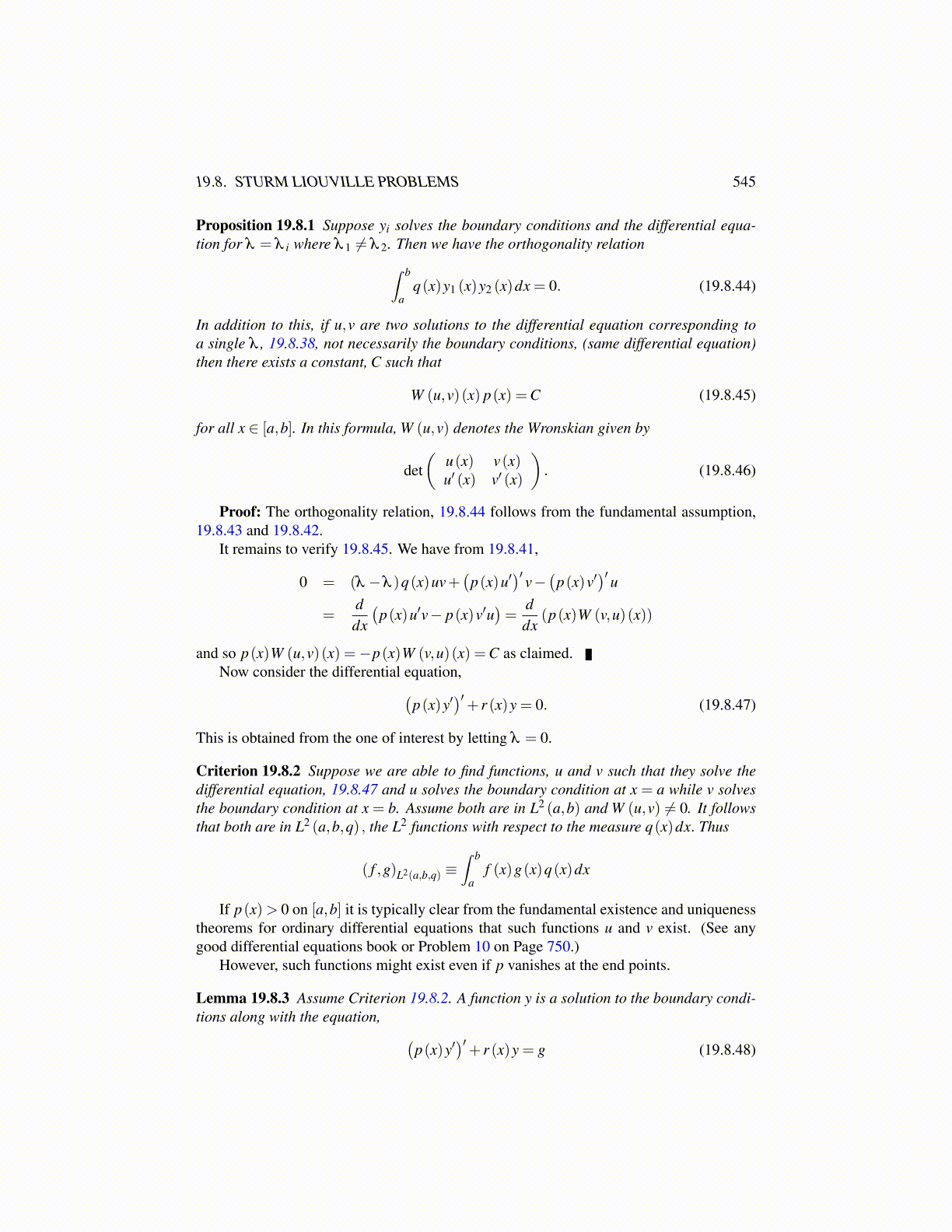
19.8. STURM LIOUVILLE PROBLEMS 545
Proposition 19.8.1 Suppose yi solves the boundary conditions and the differential equa-tion for λ = λ i where λ 1 ̸= λ 2. Then we have the orthogonality relation∫ b
aq(x)y1 (x)y2 (x)dx = 0. (19.8.44)
In addition to this, if u,v are two solutions to the differential equation corresponding toa single λ , 19.8.38, not necessarily the boundary conditions, (same differential equation)then there exists a constant, C such that
W (u,v)(x) p(x) =C (19.8.45)
for all x ∈ [a,b]. In this formula, W (u,v) denotes the Wronskian given by
det(
u(x) v(x)u′ (x) v′ (x)
). (19.8.46)
Proof: The orthogonality relation, 19.8.44 follows from the fundamental assumption,19.8.43 and 19.8.42.
It remains to verify 19.8.45. We have from 19.8.41,
0 = (λ −λ )q(x)uv+(
p(x)u′)′ v− (p(x)v′
)′ u=
ddx
(p(x)u′v− p(x)v′u
)=
ddx
(p(x)W (v,u)(x))
and so p(x)W (u,v)(x) =−p(x)W (v,u)(x) =C as claimed.Now consider the differential equation,(
p(x)y′)′+ r (x)y = 0. (19.8.47)
This is obtained from the one of interest by letting λ = 0.
Criterion 19.8.2 Suppose we are able to find functions, u and v such that they solve thedifferential equation, 19.8.47 and u solves the boundary condition at x = a while v solvesthe boundary condition at x = b. Assume both are in L2 (a,b) and W (u,v) ̸= 0. It followsthat both are in L2 (a,b,q) , the L2 functions with respect to the measure q(x)dx. Thus
( f ,g)L2(a,b,q) ≡∫ b
af (x)g(x)q(x)dx
If p(x)> 0 on [a,b] it is typically clear from the fundamental existence and uniquenesstheorems for ordinary differential equations that such functions u and v exist. (See anygood differential equations book or Problem 10 on Page 750.)
However, such functions might exist even if p vanishes at the end points.
Lemma 19.8.3 Assume Criterion 19.8.2. A function y is a solution to the boundary condi-tions along with the equation, (
p(x)y′)′+ r (x)y = g (19.8.48)